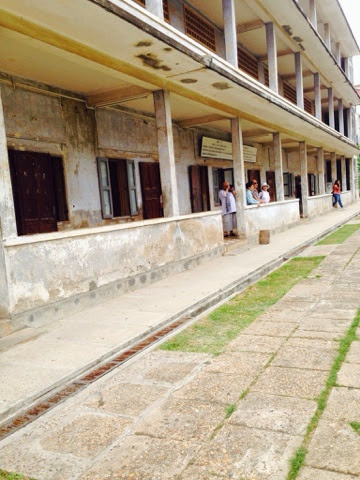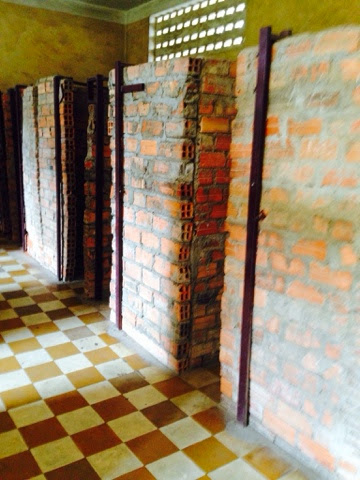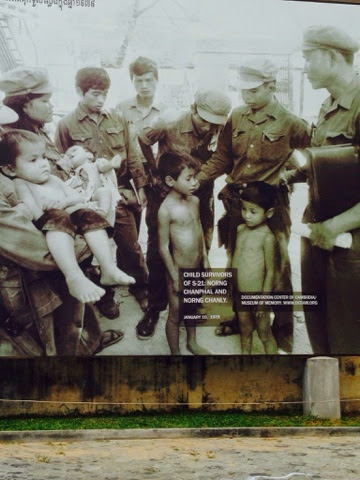The reason? Because the Khmer Rouge leader Pol Pot thought that these people could be involved in a coup against him and so he did away with all the people, young and old, local or foreigner, including his own staff who even distantly seemed to have expressed a displeasure in his rule or may have in future.
The prison had strict rules which were hard to follow and the slightest disobedience called for unimaginable torture for the inmates.
Stomachs slit out, fingernails clipped and fingers dipped in alcohol, electric shocks, whippings, and anything and everything insanely inhuman that they could think of. The weapons used, however, were the simplest of all as they could not bear the cost of heavy amunition or bullets.
When they run out of means of torture, they would simply slash the throat, smash the head with a shovel or bang the head onto a wall or tree and leave them to blead till death.
The living conditions were as pathetic as the torture. With hundreds packed into one room to eat 4 spoonfuls of food twice a day, sleep, and pass urine and feaces in the same place, life seemed like a curse which seemed to get worse each day.
They were made to confess crimes which they had never done through heinous ways and then executed for those crimes while naming their innocent friends and families to be a part of their conspiracy.
When there was no more space left in the prison grounds for burials and execution, they were taken to a killing field, 15 kms from Phnom Penh. Small babies and new borns were here thrashed against the trees and killed and the others slaughtered and burried, all in one grave. Only about 300 skulls and remains that could be recovered and preserved and kept in a chamber in the museum today while the pictures of the thousands of victims are displayed on the walls as a memoir.
This mass genocide was survived by only 7 people, some of them due to the skills they possessed which the ruler deemed useful to his work and others when the Vietnamese Army invaded in 1979 and brought this dreadful saga to an end. Only 2 children, rescued by the Vietnamese Army, were among the survivors and are still alive today.
Looking at the museum now and the pictures put up on the walls, you are left with a heavy heart and vivid images of the prison scenes and conditions and can only pray to God to let their souls rest in peace while at the same time thanking Him for giving you and your family a better life!











